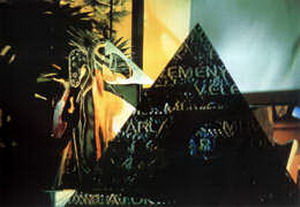
Content:
Fishing with corn has long been a popular method among anglers, especially in regions where corn is readily available. The sweet, nutritious bait attracts a variety of fish species, making it a versatile choice for both freshwater and saltwater fishing. However, to effectively use corn as a fishing lure, one must master the art of corn boating. In this article, we will delve into the intricacies of corn boating, providing you with valuable tips and techniques to enhance your fishing experience.
Understanding Corn as a Bait
Before we dive into the boating techniques, it's essential to understand why corn is such an effective fishing bait. Corn is rich in sugar and starch, which makes it an attractive food source for many fish. Its size and texture allow it to be easily consumed by a wide range of fish species, from panfish to bass and even larger predators like catfish.
Choosing the Right Corn
Not all corn is created equal when it comes to fishing. Here are a few factors to consider when selecting corn for boating:
- Type of Corn: Sweet corn is generally preferred for fishing due to its higher sugar content. Field corn, on the other hand, may be more suitable for larger fish species.
- Freshness: Fresh corn is more appealing to fish than dried or stale corn. Try to use corn that has been harvested within the past few days.
- Size: The size of the corn kernels should match the size of the fish you are targeting. For smaller fish, use smaller kernels, and for larger fish, opt for larger kernels.
Preparing the Corn
Once you have the right corn, it's time to prepare it for boating. Here are some steps to ensure your corn is ready for the water:
- Soak the Corn: Soaking the corn in water for a few hours or overnight can help to soften it, making it more palatable to fish. This step is particularly useful if you're using field corn.
- Boil the Corn: Boiling the corn for about 10 minutes can also help to soften it and remove any impurities. This method is particularly effective for field corn.
- Freeze the Corn: Freezing the corn for a few hours can toughen it up, which is beneficial if you're targeting larger fish that might rip through softer corn more easily.
Corn Boating Techniques
Now that your corn is prepared, it's time to learn the art of corn boating. Here are some techniques to consider:
- Live Corn: This involves placing a whole kernel of corn on the hook. Live corn is more likely to attract fish due to its natural movement in the water. To use live corn, thread the kernel onto the hook with the hook point facing down.
- Cut Corn: For larger fish, you can cut the corn into smaller pieces and thread them onto the hook. This method is also useful if you want to present more corn to the fish at once.
- Corn Mixture: Combine corn with other baits, such as dough or bait fish, to create a mixture that can attract a wider range of fish species.
- Corn on a String: Attach a piece of corn to a string and lower it to the bottom. This method is particularly effective for bottom-feeding fish like catfish.
Timing and Patience
One of the most important aspects of corn boating is timing and patience. Fish may take some time to notice the corn, so it's crucial to be patient. Here are a few tips to help you wait effectively:
- Wait for Bites: Once you've cast your line, wait for a few minutes before reeling in. Fish may take time to approach the bait.
- Change Lures: If you're not getting any bites, try changing the size or type of corn, or switch to a different bait altogether.
- Experiment with Depths: Fish may be at different depths at different times. Experiment with varying the depth of your corn to find where the fish are.
Conclusion
Corn boating is a simple yet effective method for catching a variety of fish species. By understanding the properties of corn, preparing it correctly, and employing the right boating techniques, you can significantly enhance your chances of success on the water. Remember to be patient and experiment with different methods to find what works best for your fishing environment. With practice and experience, you'll soon become a master of the art of corn boating. Happy fishing!












